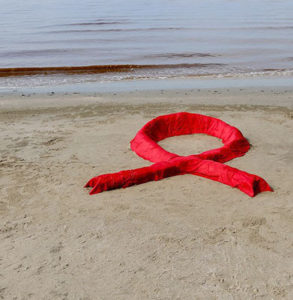
At the beginning of the AIDS epidemic in the 1980s, those with the disease typically only lived a few years beyond diagnosis. Today, breakthrough drugs, earlier diagnosis and more evidence-based treatment mean those with HIV or AIDS can live longer, healthier lives. But with these advances come new challenges associated with aging.
With this longer life expectancy, individuals living with long-term HIV infection exhibit many clinical characteristics commonly observed in aging: multiple chronic diseases or conditions, the use of multiple medications, changes in physical and cognitive abilities, and increased vulnerability to stressors.
In a recent report, Aging Positively: Bringing HIV/AIDS into the Aging Services Mainstream: An Introduction for Funders Grantmakers In Aging (GIA), a national membership organization of philanthropies, examines the unique needs and experiences of this resilient, diverse, and courageous group of people, and offers insights into how aging services and HIV/AIDS specialty services, as well as philanthropies of all types and sizes, can begin to work together to help meet the needs and improve the quality of life for older people living with HIV. The report provides valuable insight for reporters seeking story ideas for this unique population of older adults. (Note that the report was supported by Gilead Sciences, which manufactures several HIV/AIDS drugs).
About half of the 1.1 million people in the United States living with HIV or AIDS are now 50 or older, according to the Gay Men’s Health Crisis. That number is projected to rise to 70 percent in the next 10 years, as more long-term survivors age and more older people acquire new infections. The CDC says older adults accounted for 17 percent of the 39,782 new HIV diagnoses in 2016 in the United States.
The report notes that HIV preparedness in mainstream primary, specialty, and geriatrics care settings is often lacking, which can be jarring and even traumatizing to older patients. Even when their HIV is well-controlled, there’s a need for geriatric intervention at younger-than-usual ages. Stigma remains a huge obstacle, as fear of being rejected or “outed” in unfamiliar care settings can drive people living with HIV into isolation and depression, dangerously sabotaging their ability to remain in care. This 2016 story from WBUR looked at some of the issues raised around the challenges of aging with HIV or AIDS, which still hold true today.
HIV appears to increase the risk for several age-associated diseases, as well as to cause chronic inflammation throughout the body. Chronic inflammation is associated with several health conditions, including cardiovascular disease, lymphoma, and Type 2 diabetes, as this UPI story describes. Researchers are working to understand better what causes chronic inflammation, even when people are treated with antiretroviral therapy (ART).
Older Americans are more likely than younger Americans to be diagnosed with HIV infection late in the course of their disease, leading to a late start to treatment and possibly more damage to their immune system. This can lead to poorer prognoses and shorter survival after diagnosis. Health care providers may not always test older people for HIV infection, and older people may mistake HIV symptoms for those of normal aging and don’t consider HIV as a cause, according to the Department of Health and Human Services.
In 2016, 35 percent of people aged 50 and older already had a late-stage infection (AIDS) when they received an HIV diagnosis the CDC says. That percentage had declined since 2011, when 42 percent already had a late-stage infection. This AP story looks at The Pitt Men’s Study, a 35-year, ongoing effort, which is the foundation of “hundreds of research projects.”
Proper care also requires far more than medicine, according to the Grantmakers report. Social support and attention to the social determinants of health are critical, as many people living with HIV are on low or fixed incomes, or unable to work; maintaining housing and food security, mobility, and social connection can pose a daunting challenge. A report from the University of San Francisco looked at some of the unique challenges of LGBTQ seniors, from finding affordable housing to hiding their identity in care facilities. This Next Avenue story looks at the “dual stigma” of being HIV-positive and over 50.
“People aging with HIV are some of the most vulnerable, stigmatized, and systematically excluded people in our society. This issue should feel relevant to many different kinds of funders,” says John Feather, Ph.D. and CEO of Grantmakers In Aging. “Whether you work on social determinants of health, clinical research, mental health and social services, or social justice issues, we need to work together to ensure that people entering late life with HIV have access to care and services to meet their complex needs.”
Peer support makes a huge difference, according to this NPR story. While it doesn’t exclusively focus on aging adults, many of the points made in the story are equally applicable to seniors — as I previously reported, many already struggle with issues of social isolation or loneliness.
Journalists may want to look at what local programs are available for seniors with HIV or AIDS, like this one ABC10 News highlighted in Marquette County, Mich.
Barriers to access and the cost of PReP, a drug that can help prevent HIV transmission has been a contentious issue. North Carolina Health News reports on efforts in Mecklenberg County to study user demographics. What is your county/city/state doing to help people gain access or afford the drug?
To assist in your reporting:
- The National Resource Center on HIV and Aging has tons of additional reports, data and information on the disease and related symptoms.
- The American Psychological Association is a good place to turn when reporting on the mental health of older people with HIV or AIDS.
- The Florida-based AIDS Institute is a national organization that focused on public policy, advocacy and educational issues.






